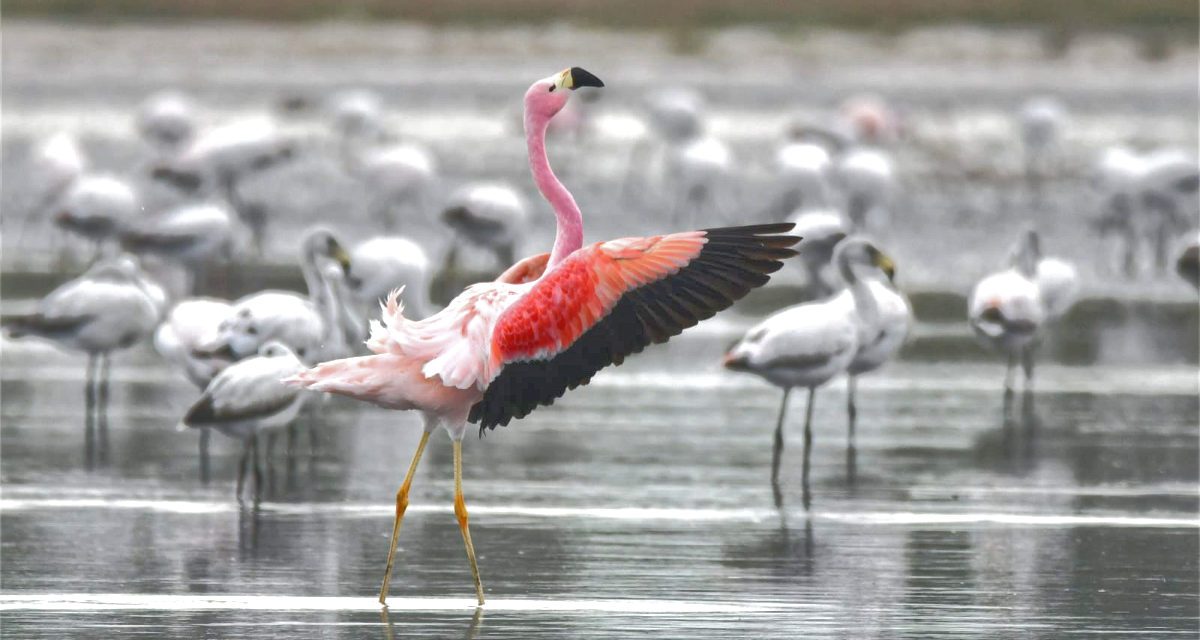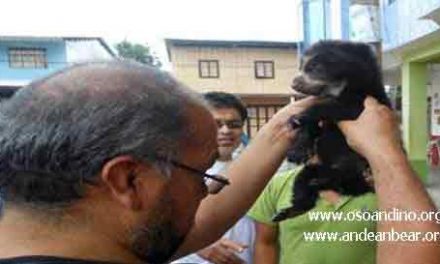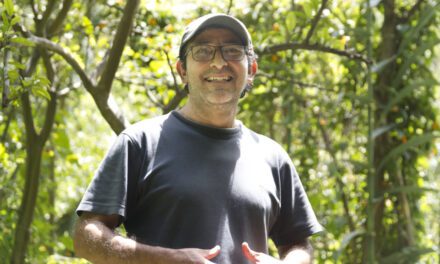As responsible travelers evolve, so do the stories we share.
This article is part of our living archive — trusted content we continue to care for.
First published on December 2, 2022 • Last updated on December 3, 2022.
Although I have yet to visit Ansenuza National Park or see the stunning flamboyance of flamingos in person, I feel like I know the place. For the last few weeks, I have imagined myself walking along the salt-rimmed shore of Laguna Mar Chiquita admiring the striking collection of Chilean, Andean, and Puna flamingos. This key habitat is the heart and soul of the new park.
Laguna Mar Chiquita
Last week, I was fortunate enough to speak with Matías Federico Carpinetto, the soon-to-be superintendent of the newly created Ansenuza National Park.
As a Boy Scout, Matías always felt a strong connection to the outdoors, leading him to consider a career in conservation. In 2002, he became a park ranger working at National Parks in Formosa, Jujuy, and Salta, preparing for his newest job.
Matías spoke eloquently of the importance of founding a national park that includes Laguna Mar Chiquita, the fifth largest salt lake in the world and the largest in South America, and its surrounding wetlands:
“The Laguna Mar Chiquita is a wetland of more than 1,000,000 hectares where a diversity of species of birds, reptiles, mammals, fish, and flora converge with a very strong cultural identity witnessed by the remains of ancient cultures like pottery sherds and arrowheads… The park was founded with the support of the local community in large part because they saw the opportunity to conserve this wetland and its cultural heritage.”
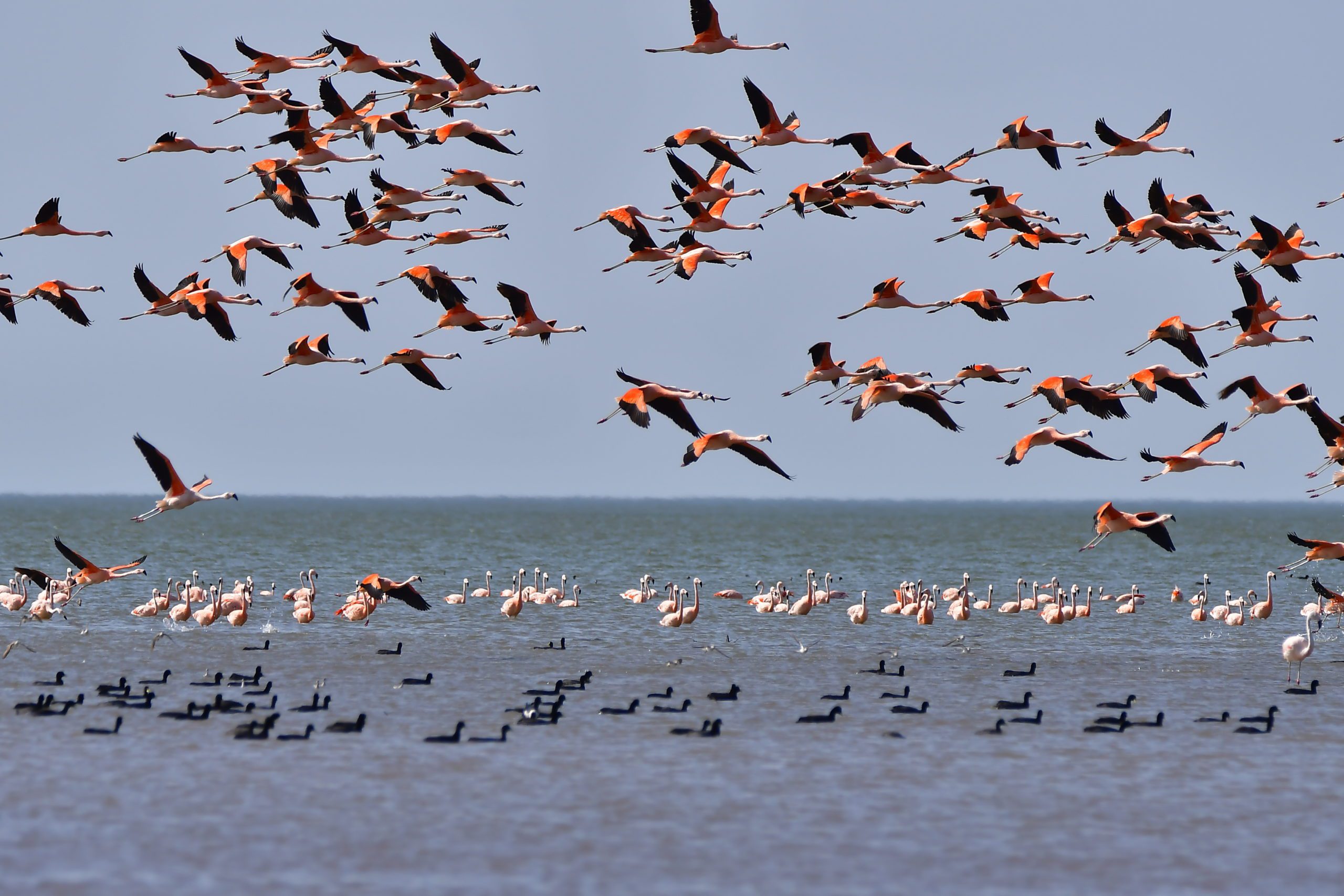
Laguna Mar Chiquita supports over 350,000 flamingos, South America’s largest concentration. Most of these are Chilean Flamingos, like those I have seen in Ecuador. Next comes Puna Flamingos, sometimes called James Flamingos. Finally, the smallest group at the lake is the Andean Flamingo, the rarest in the world, with fewer than 40,000 birds remaining. This one is my favorite because I like to root for the underdog.
How do we know these numbers? Because scientists count flamingos!
Even before the formation of Ansenuza National Park, scientists have conducted censuses of flamingos in Laguna Mar Chiquita and the surrounding wetlands. For the past 10 years, there are consistent records which allow scientists to better understand patterns of flamingo behavior. Of course, the lake is huge so the best way to count birds is from the air.
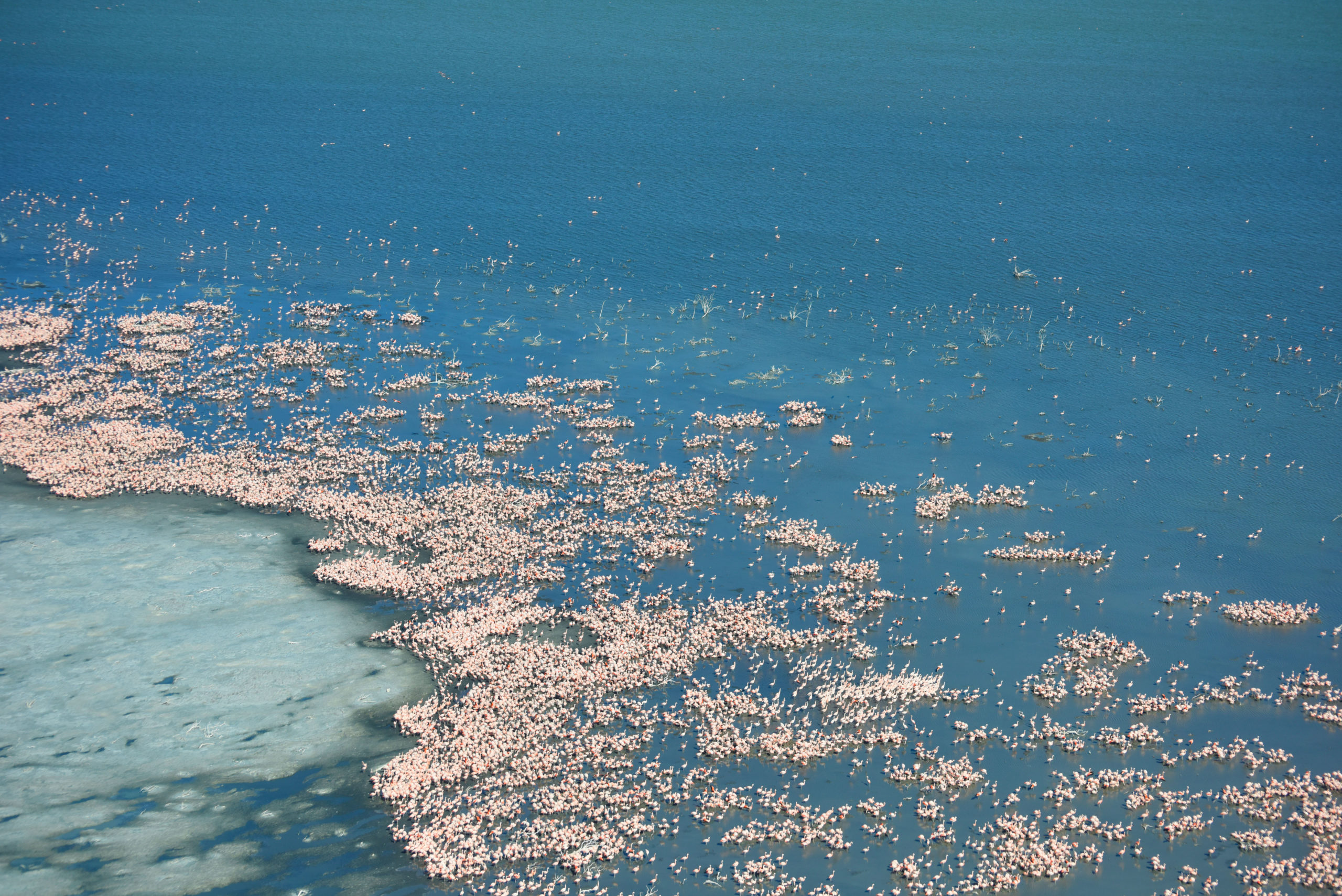
How does an aerial census work?
Twice a year, once in the winter (July-August) and once in the summer (February-March), a team boards a small plane to fly over more than 500 kilometers of coastline. Yep, Laguna Mar Chiquita is really that large.
Photographers sit on either side of the plane, taking photographs from the windows in a measured and timely manner. In this way, every bird on the lake and in the surrounding wetlands should appear in a photograph. Then, after the aerial survey is complete, a team of scientists will use those photos to count the birds.
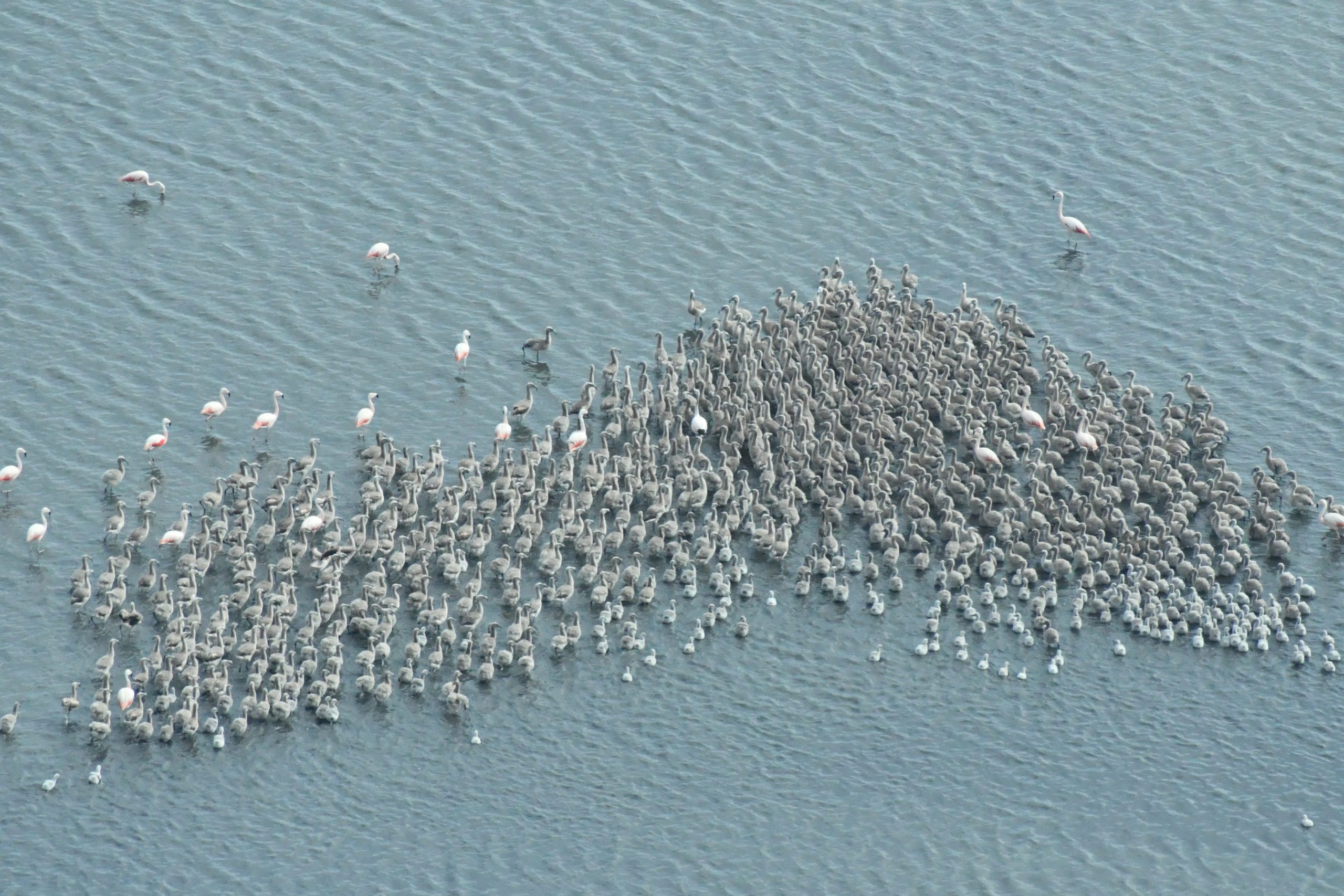
How are aerial surveys used in flamingo conservation?
When I asked Matías about the importance of these biannual aerial surveys, he explained that taking censuses allows the National Park to measure any changes in flamingo populations. While a remarkable change in a single year may not imply a problem, changes over several years provide facts that scientists need to convince governments that species are under threat.
For example, in the 1970’s, this region experienced massive flooding, decreasing the salinity of the lake and harming the types of marshes loved by high-Andean flamingos and Nearctic shorebirds. For a few years after the flooding, fewer flamingos used Laguna Mar Chiquita for nesting. However, as the waters receded, the birds began to return.
The flamingo census also helps scientists understand which birds use Laguna Mar Chiquita for nesting grounds and which remain year-round.

For example, two species of flamingos, the Andean and the James, spend summers in the Andean puna and altiplano of Chile, Bolivia, and Argentina. They choose endorheic bodies of water full of their favorite food source (diatoms and other algae) to breed, nest, and raise their young.
Each lake may host only a small flock or a few birds, making it hard to count the total number of flamingos in the entire area. However, when these lakes freeze over in the winter, the birds fly further south, the largest group congregating in Ansenuza National Park.
Knowing how many of these birds consistently return to Laguna Mar Chiquita helps track the health of both species. If birds don’t return year after year, that sends a message that scientists need to check the summer nesting grounds which are under threat from rapidly melting glaciers, irresponsible tourism, and human encroachment.
Interestingly, many Andean and Puna flamingos are beginning to make Laguna Mar Chiquita a year-round home, like hundreds of thousands of their Chilean Flamingo cousins. This phenomenon has been captured by the census. But scientists don’t understand why the birds are changing their behavior. Future census data might help answer the question.
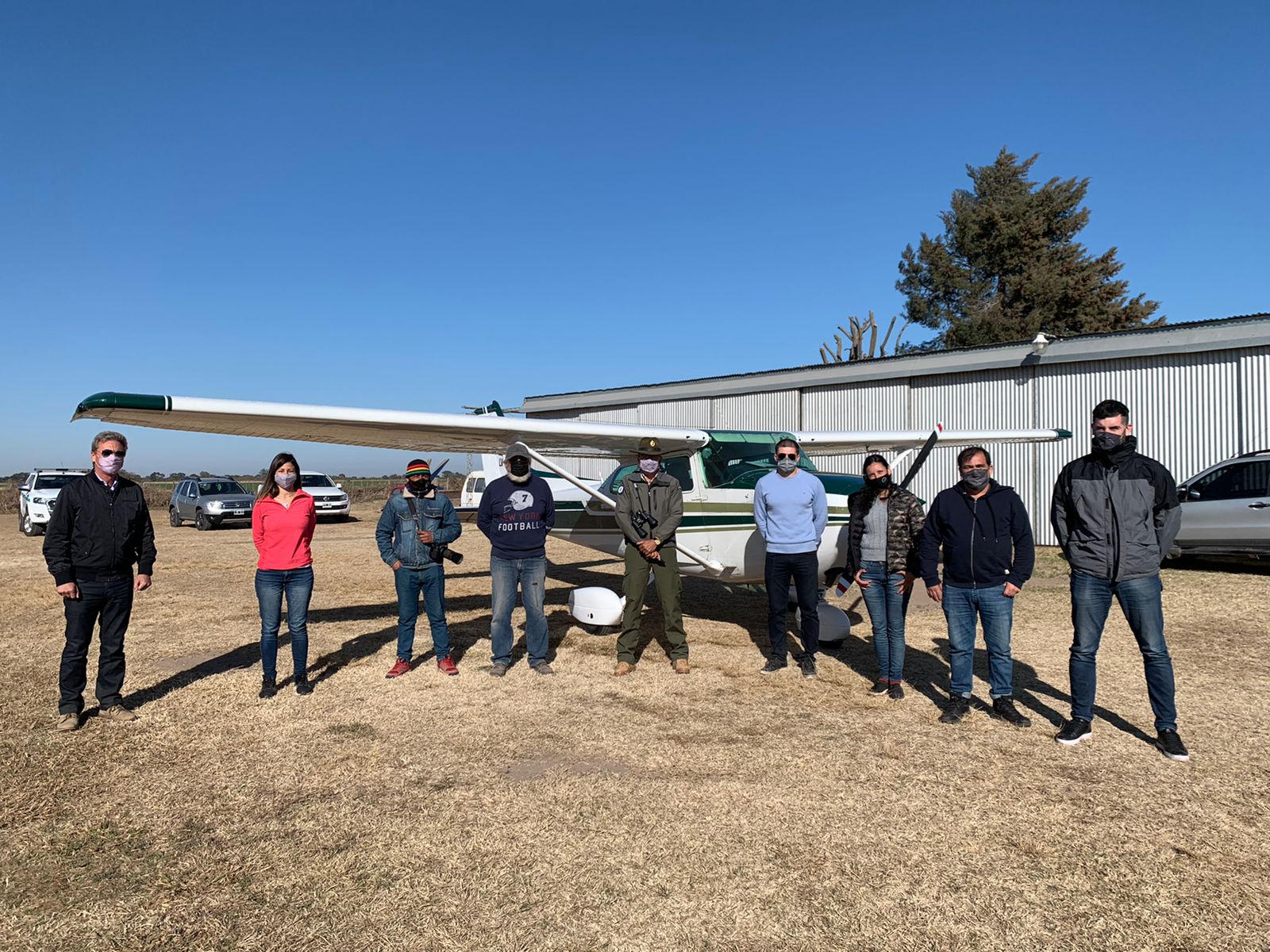
Funding the Biannual Aerial Census
The biannual aerial census requires a budget for training staff, maintaining and purchasing equipment, and the need to contract a pilot and plane.
With the creation of the National Park, some believe that the government would take over the census program. However, as noted by Matías, relying on funding from conservation non-profits guarantees better success year after year. After all, governments worldwide fund projects at the whim of local politicians, making it hard for scientists to rely on consistent support. Having data each and every year is key to protecting flamingos.

How can we help the flamingos?
Everything I have read over the past few weeks repeated the same key information: it is essential that we count the flamingos of Ansenuza National Park so that we can better understand their migration patterns, their nesting habits, and their ability to survive modern-day threats like climate change and habitat destruction.
This year, Not Your Average American has partnered with Natura International to raise funds in support of this important cause.
Natura International, a US American non-profit, has a history of working with several other groups like Aves Argentinas and the Grupo de Conservación Flamencos Altoandinos. In fact, for the past 10 years, they have helped monitor the three species of flamingos alongside these two organizations. Let’s help them continue this important work.
Our goal immediate goal is to get 25 donors to get this campaign rolling. We ask that you be one of them!
If you would like to be a part of promoting this campaign, please reach out. We are looking for writers, bloggers, conservationists, and more who want to make a difference! Everyone has a role to play when it comes to counting flamingos in Ansenuza National Park.
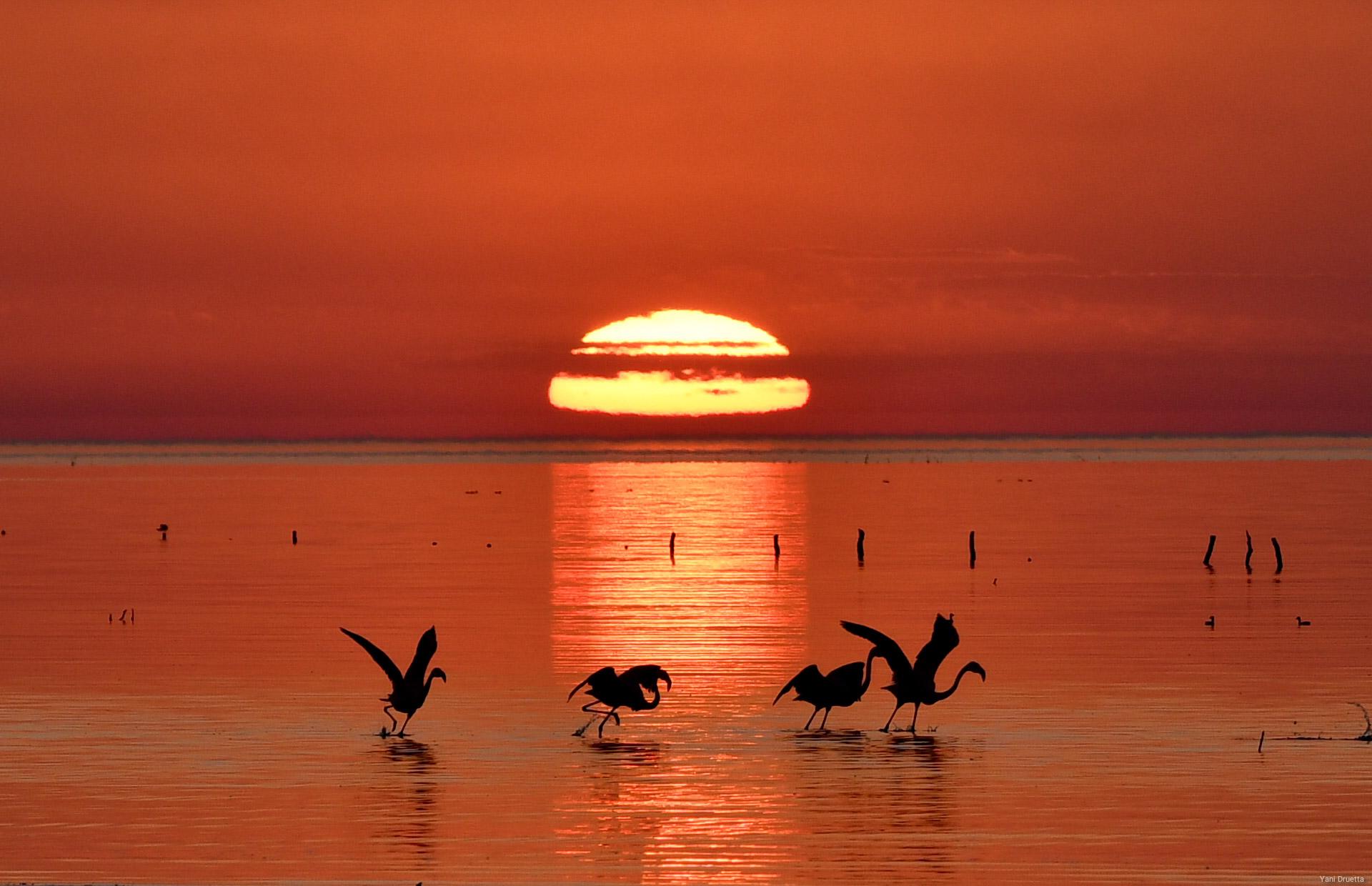

This post was written in partnership with Natura International who kindly provided all photography and financial support.

